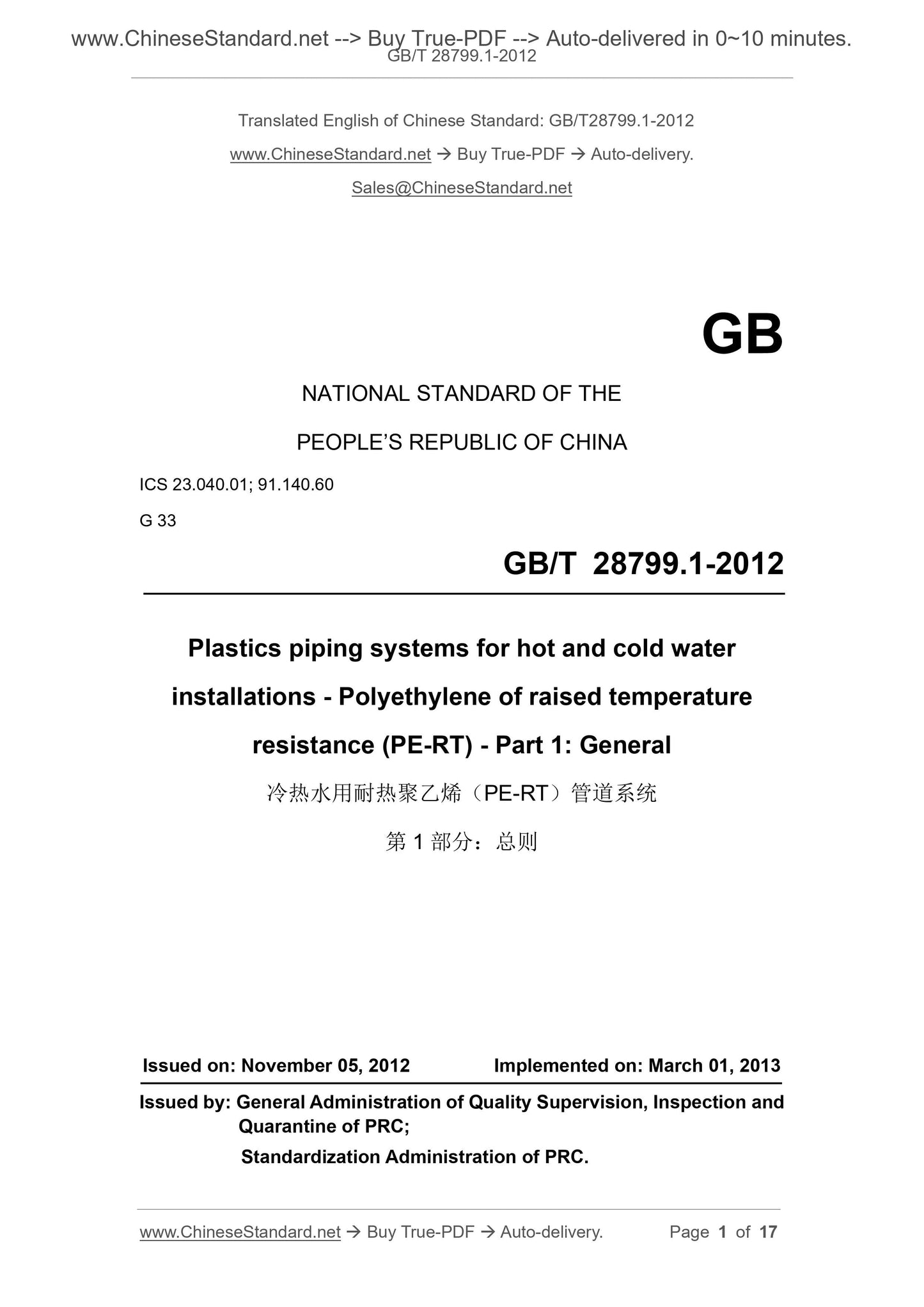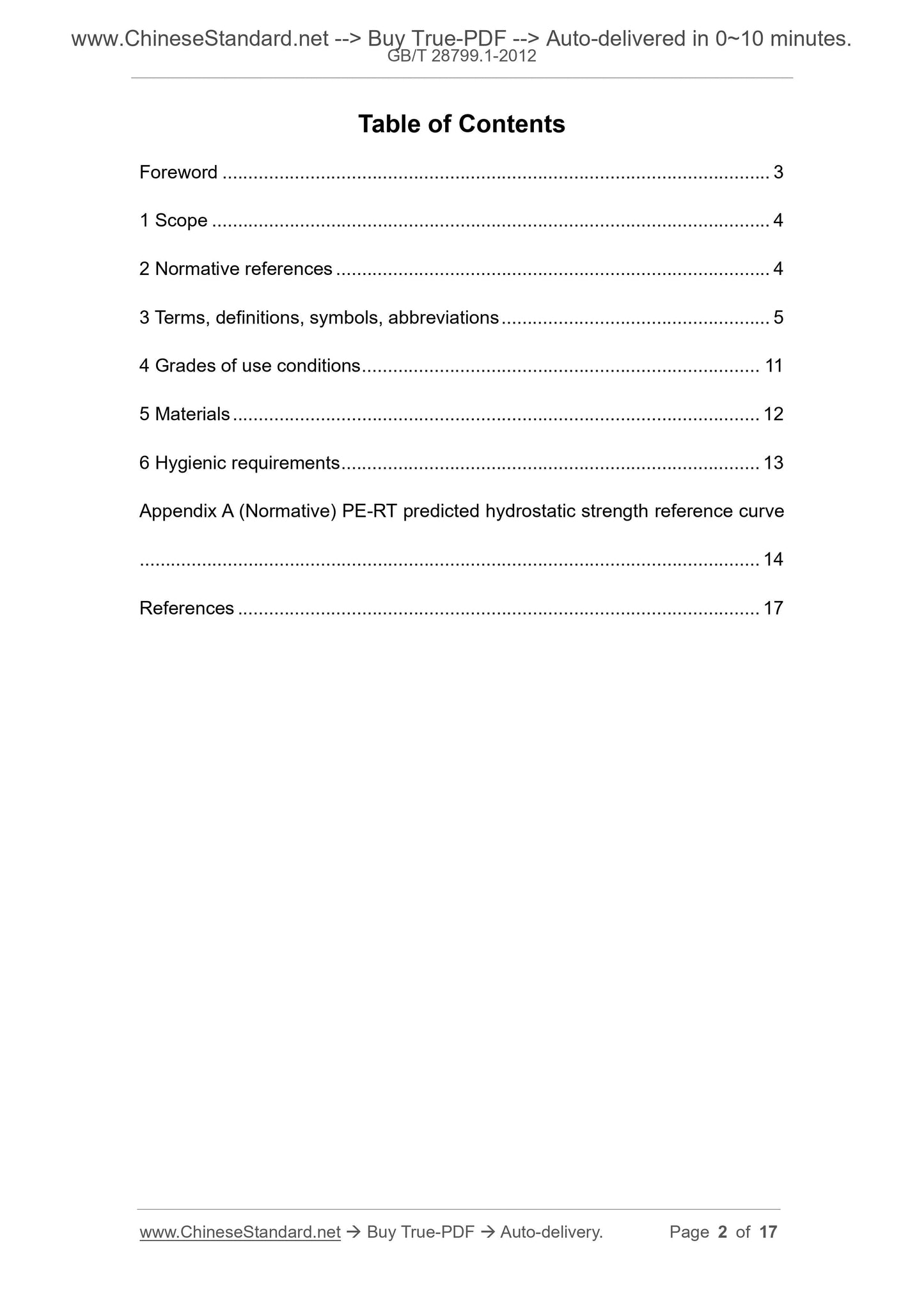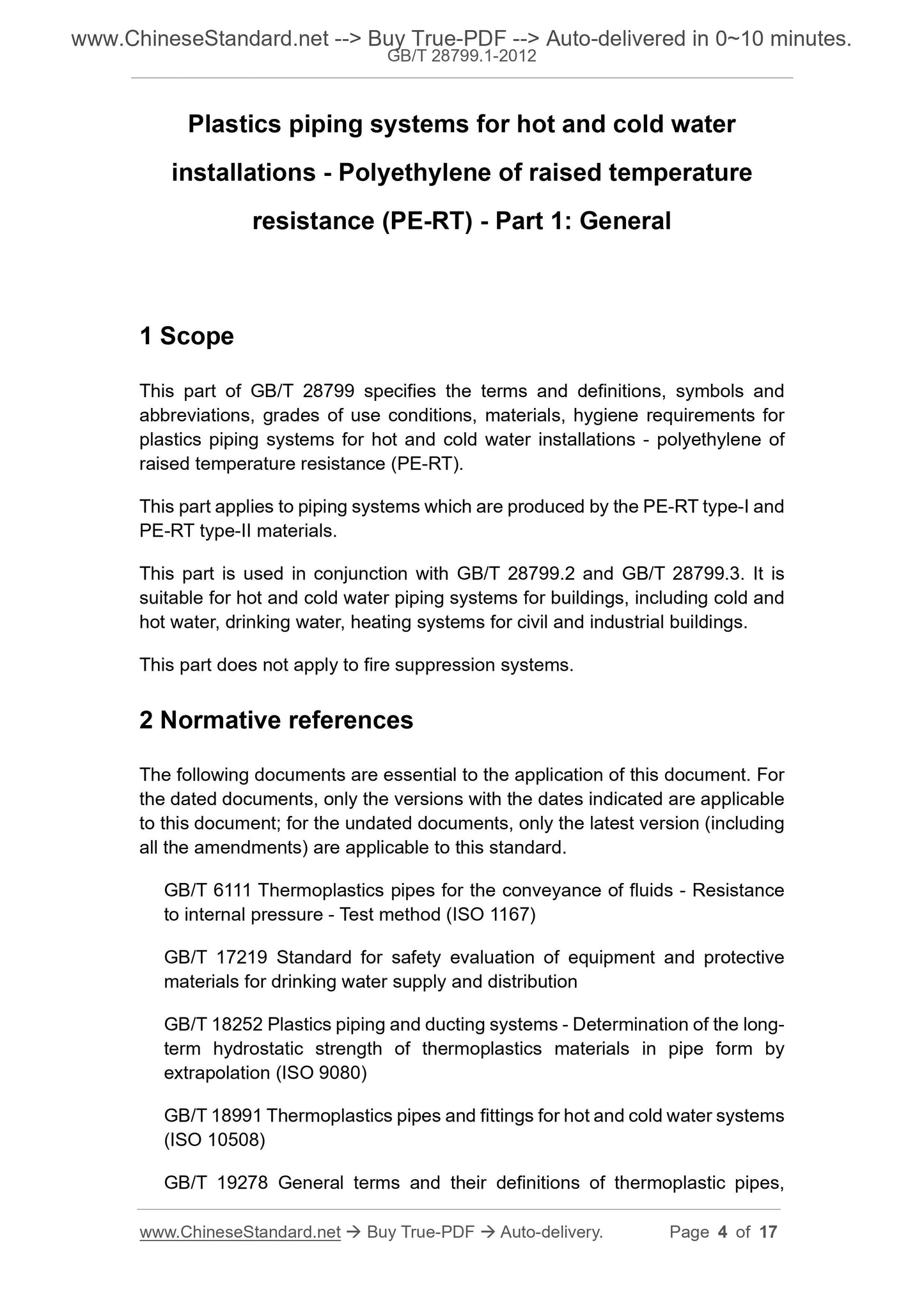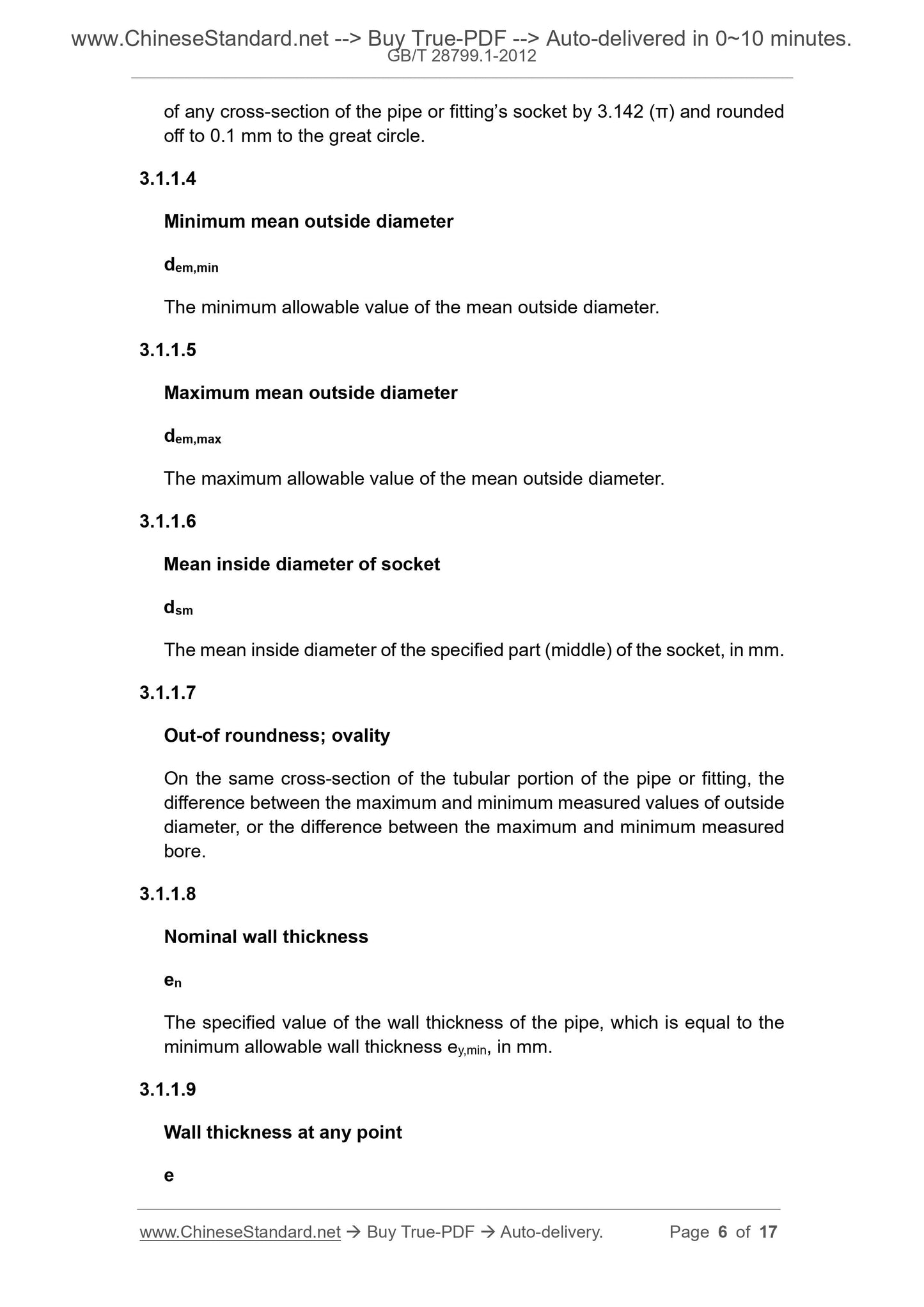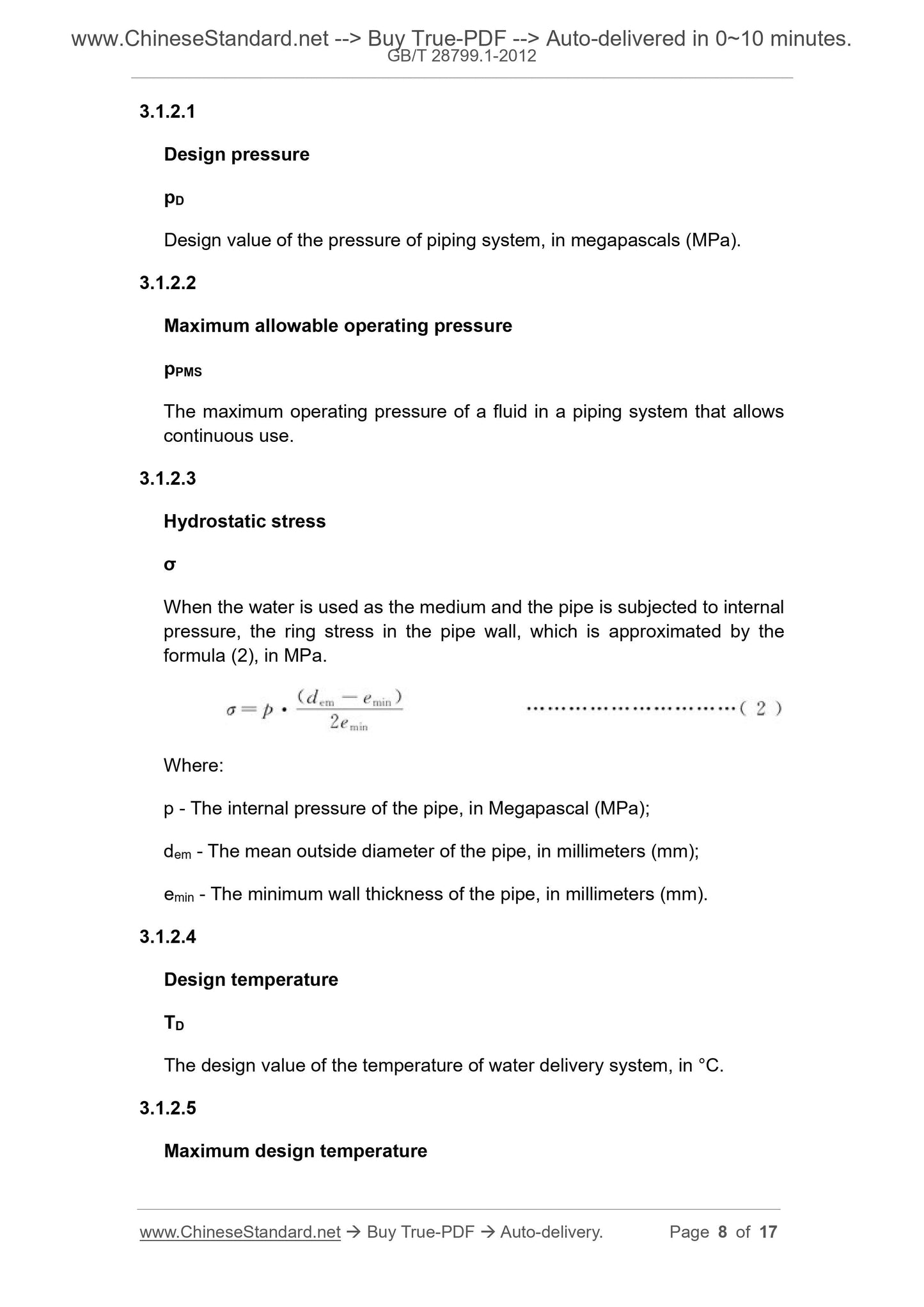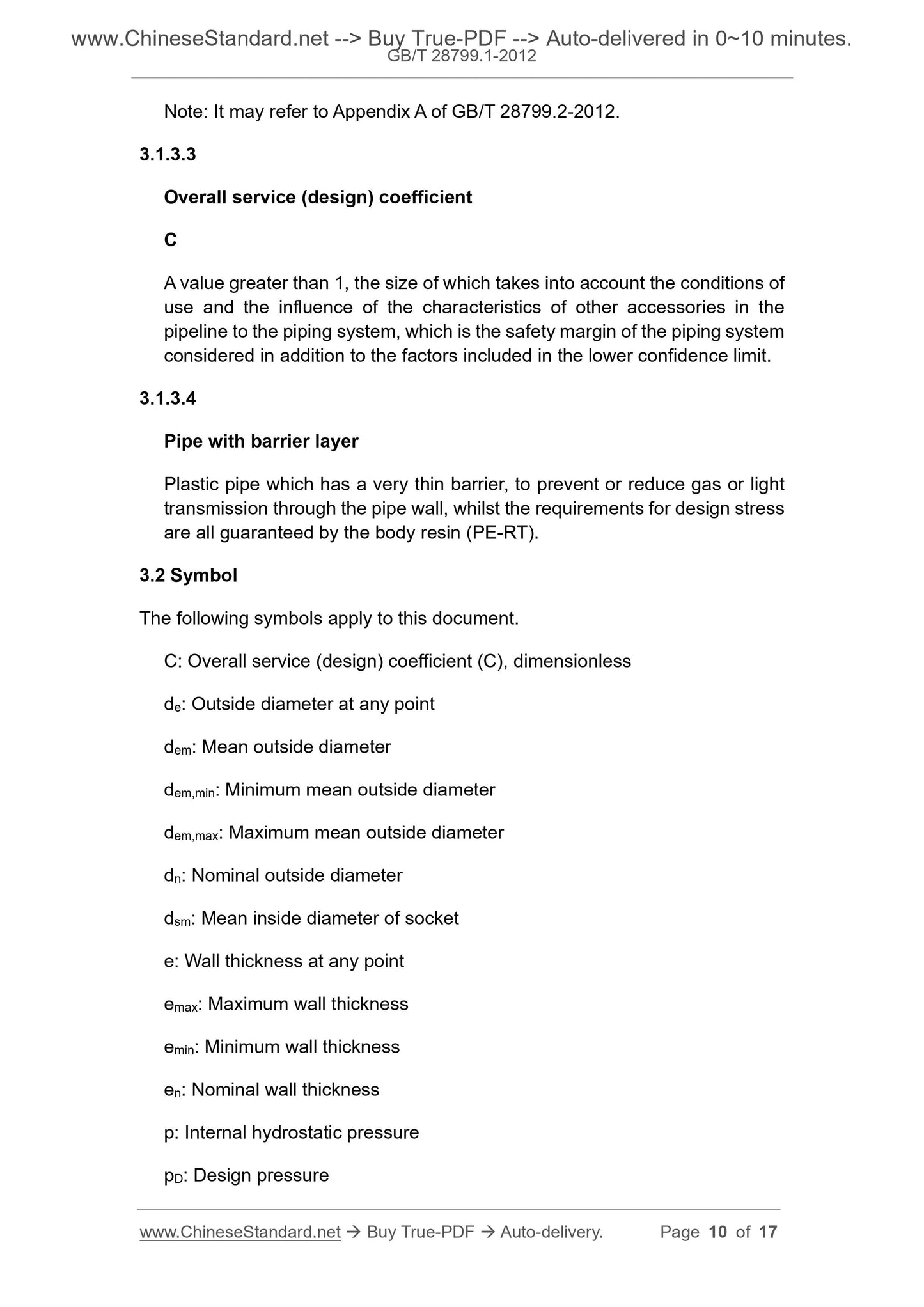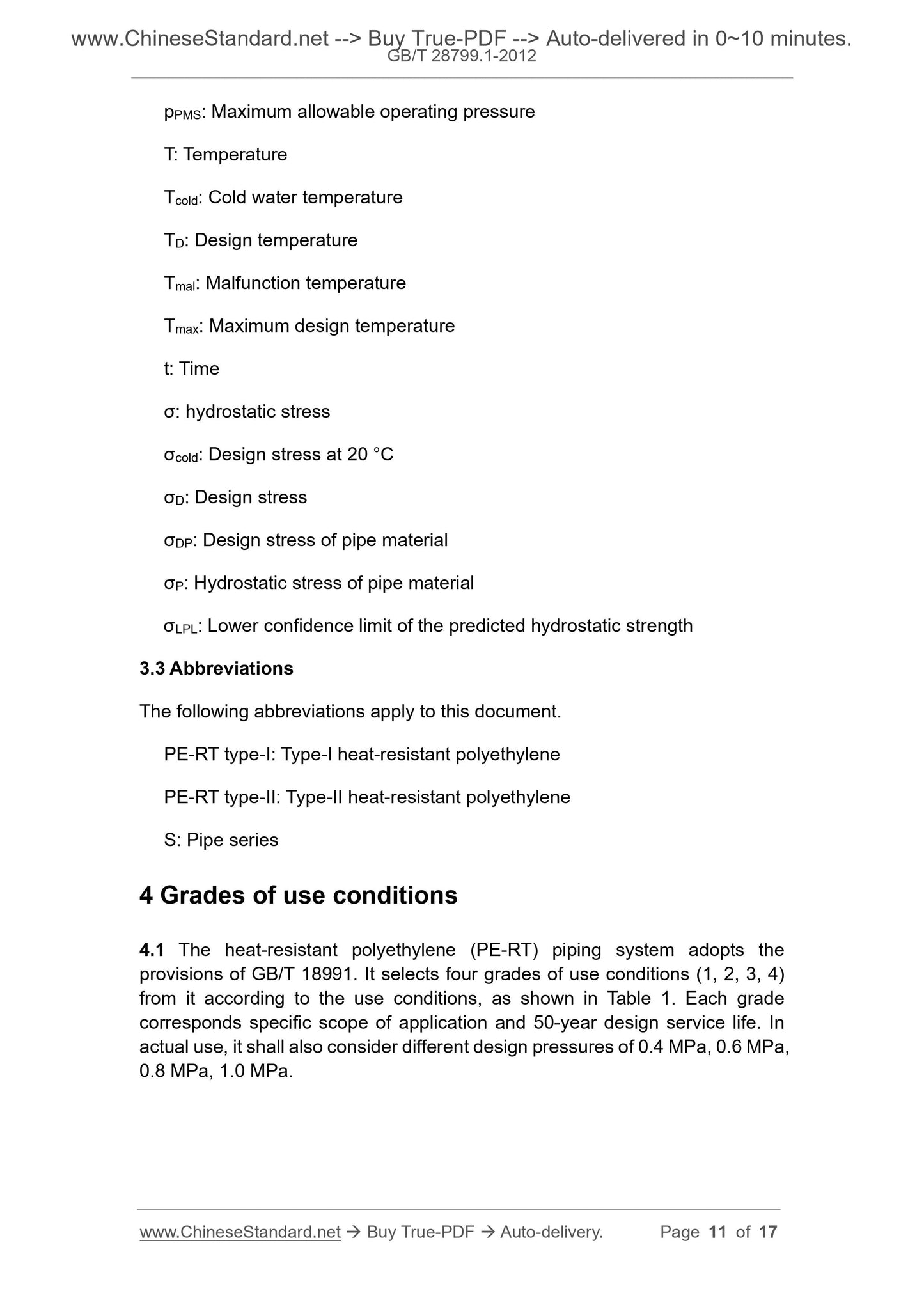1
/
of
7
www.ChineseStandard.us -- Field Test Asia Pte. Ltd.
GB/T 28799.1-2012 English PDF (GB/T28799.1-2012)
GB/T 28799.1-2012 English PDF (GB/T28799.1-2012)
Regular price
$160.00
Regular price
Sale price
$160.00
Unit price
/
per
Shipping calculated at checkout.
Couldn't load pickup availability
GB/T 28799.1-2012: Plastics piping systems for hot and cold water installations -- Polyethylene of raised temperature resistance (PE-RT) -- Part 1: General
Delivery: 9 seconds. Download (and Email) true-PDF + Invoice.Get Quotation: Click GB/T 28799.1-2012 (Self-service in 1-minute)
Newer / historical versions: GB/T 28799.1-2012
Preview True-PDF
Scope
This part of GB/T 28799 specifies the terms and definitions, symbols andabbreviations, grades of use conditions, materials, hygiene requirements for
plastics piping systems for hot and cold water installations - polyethylene of
raised temperature resistance (PE-RT).
This part applies to piping systems which are produced by the PE-RT type-I and
PE-RT type-II materials.
This part is used in conjunction with GB/T 28799.2 and GB/T 28799.3. It is
suitable for hot and cold water piping systems for buildings, including cold and
hot water, drinking water, heating systems for civil and industrial buildings.
This part does not apply to fire suppression systems.
Basic Data
| Standard ID | GB/T 28799.1-2012 (GB/T28799.1-2012) |
| Description (Translated English) | Plastics piping systems for hot and cold water installations -- Polyethylene of raised temperature resistance (PE-RT) -- Part 1: General |
| Sector / Industry | National Standard (Recommended) |
| Classification of Chinese Standard | G33 |
| Classification of International Standard | 23.040.01; 91.140.60 |
| Word Count Estimation | 13,183 |
| Quoted Standard | GB/T 6111; GB/T 17219; GB/T 18252; GB/T 18991; GB/T 19278; GB/T 28799.2-2012; GB/T 28799.3-2012 |
| Regulation (derived from) | National Standards Bulletin 2012 No. 28 |
| Issuing agency(ies) | General Administration of Quality Supervision, Inspection and Quarantine of the People's Republic of China, Standardization Administration of the People's Republic of China |
| Summary | This standard specifies the hot and cold water resistant polyethylene (PERT) piping systems terminology and definitions, symbols and abbreviations, conditions of use level, materials and hygiene requirements. This section applies to a PE-RT I -and PE-RT I |
Share
